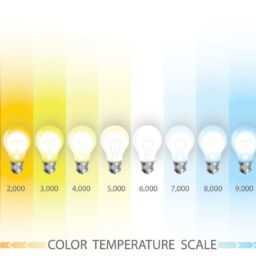Six Types of Renewable Energy Sources – What Are They?
The global battle against climate change has encouraged both developed and developing nations to reduce carbon dioxide emission. Signatories of the Kyoto Protocol lead the world to emission reduction activities, one of which is conducting research and development on renewable energy. Here are six types of renewable energy sources that are being considered to power the globe in the nearest future.
1. Hydroelectric Power
Hydropower is the largest source of renewable energy. Its generating capacity amounts to 77,000 megawatts. Water coming from rivers and waterfalls are released through turbines to produce energy. Although the technology is non-pollutant, it can possibly harm marine wildlife as it may alter the quality of water. Other than that, hydropower is also highly expensive and is likely to take a long time to install.
2. Biomass
The International Energy Agency reports that 11% of the world’s renewable energy is derived from biomass. The technology produces 7,000 megawatts of renewable electricity. Biomass is taken from industrial processing of forestry and wood products, agriculture, construction and solid waste. These biodegradable materials are converted to gas by burning it in a gas turbine. In the United States, mill operations are the main source of biomass energy. It is the best alternative to coal as it produces less sulfur dioxide.
3. Geothermal Energy
Among the six types of renewable energy sources, geothermal is one of the most cost-effective and reliable. In the United States alone, it generates up to 2,800 megawatts of energy every year which is roughly 2% of the total energy consumption in the country. Geothermal energy is produced from naturally occurring steam under the Earth’s surface. Steam is extracted to power a turbine which in turn powers an electric generator. The problem with geothermal energy is the difficulty to find viable land sites. However, the same technology is employed on a smaller scale to power building heaters.
4. Wind Energy
Wind energy produces 2,500 megawatts of energy that comprises 1% of the total electricity consumption in the United States. The wind rotates the blade that is attached to a main shaft where a generator is installed. Energy capacity is determined by the size of turbine. Small wind turbines are generally used to power households, farms and ranches in the country. The downside to this technology is the noise that it produces and its relatively expensive installation cost.
5. Photovoltaic Cells
Photovoltaic cell is one among the six types of renewable energy sources that does not require high maintenance. It basically produces energy by using microchip-like materials that absorbs sunlight. This frees the electrons from their atoms and allows them to generate electricity. PV cells are generally reliable and produce less to none pollution.
6. Solar Thermal Systems
Solar thermal systems, as the name implies, also derive energy from sunlight. The system uses solar collectors to absorb solar radiation that will then be used to heat water or air that will generate steam used to operate a turbine. The turbine will then power a generator.
Federal and state government encourages citizens to install solar energy at home or in the workplace by awarding income tax credits. The same is being done for the other six types of renewable energy sources.
wind power
#Types #Renewable #Energy #Sources
Will be pleased to have you visit my pages on social networking .
Facebook page here.
Twitter account is here.
Linkedin account here
Post byBedewy for info askme VISIT GAHZLY

